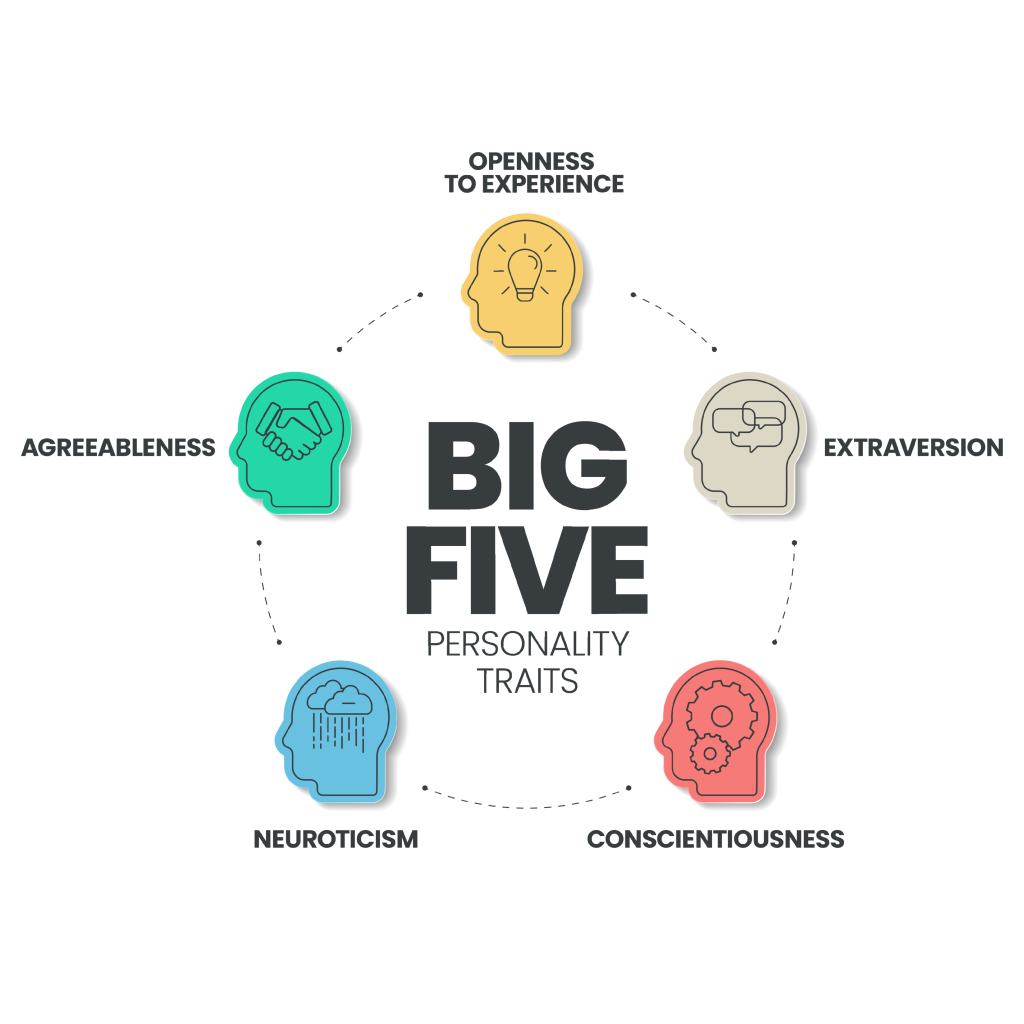Explore why people exhibit varied emotional responses: A deep dive into the complexities of human behavior, emotions, and reactions. Uncover the intricate interplay of psychological, neurological, and environmental factors influencing our diverse emotional reactions. From personality traits and genetic makeup to life experiences and cultural backgrounds – understand the multifaceted reasons behind our unique emotional landscapes.
————
Table of Contents
The core challenge for human behavior research is to try and make an exact science out of something that is by definition inexact, namely human emotion, and more specifically, how people display emotions. While there are some parameters to reaction that are overarchingly consistent through most of the global population, such as when to exhibit fear, happiness, sadness etc, the level to which we display emotions can, and most likely will, vary from person to person. But why is that? In this article we will aim at trying to understand why some people react primarily to negative emotions while others react almost exclusively to positive emotions.
Human behavior research, as many of you know, works by finding common ground and common denominators in the data collected from respondents. These comparable parameters can then be the foundation for a hypothesis or a finding in any given field, be it commercial or academic. The important thing to note here though is that these findings apply to populations, and not individuals – and individuals can vary a great deal from the population.
There are several different reasons why people might react very differently to emotion-provoking situations or stimuli, and the causes can be many varied and can be both internal and external. The age-old nature/nurture balance also plays into this question, by people being affected by where and how they have been brought up, as well as by the sum of their experiences.
This is why people do not react the same;
Let’s imagine that a globally diverse group of 20 people have been given the task of watching a video that is meant to elicit strong emotions. As people who have done enough data analysis will know; there will likely be 20 different emotional reactions to that video. Some will be almost identical to each other while some will be outliers. All of them are valid data, but why are they different?

Differing emotional reactions among people to the same stimuli can be attributed to the interplay of psychological, neurological, and environmental factors unique in every single individual. These differences underscore just how nuanced human emotions and their underlying mechanisms can really be. To understand why people have varying emotional responses, it is important to look at the key factors such as individual differences in personality, life experiences, genetic makeup, cultural background, and the current context in which an emotion is experienced.
Psychological Factors: Personality Traits
The Big Five and Emotional Experience: The Big Five personality traits—openness, conscientiousness, extraversion, agreeableness, and neuroticism—can influence how individuals perceive and react to situations. Lucas and Fujita’s research (2000) on personality and subjective well-being suggests that traits like neuroticism and extraversion are strongly correlated with emotional reactions and overall happiness. Extraverts, for instance, tend to experience positive emotions more frequently – likely due to their predisposition towards social engagement and novelty seeking (Lucas & Fujita, 2000).
What is “The Big Five” Personality Traits Model?
“The Big Five” personality traits model, also known as the Five-Factor Model, outlines five broad dimensions used to describe human personality. These dimensions are Openness (creativity and curiosity), Conscientiousness (organization and dependability), Extraversion (sociability and enthusiasm), Agreeableness (compassion and cooperation), and Neuroticism (emotional instability and anxiety). This model suggests that these five traits represent the basic structure of personality, with individual differences in these traits influencing behavior, thoughts, and emotions. It’s widely accepted in psychological research for assessing and studying personality (although not without critique).

Personality and Emotion Regulation: According to Gross and John’s Emotion Regulation Questionnaire (ERQ), individuals with different personality traits prefer different emotion regulation strategies, which can affect their emotional reactions. For example, individuals high in neuroticism may lean towards rumination, a strategy associated with negative emotional outcomes, while those high in extraversion may favor more adaptive strategies like cognitive reappraisal (Gross & John, 2003).
Neurological Factors: Genetic and Brain Structure
Genetic Influences on Emotion: Research by Canli et al. (2002) indicates that genetic variations, especially those affecting the serotonin transporter gene (5-HTTLPR), are linked to differences in emotional response to negative stimuli. Individuals with one variant of this gene exhibited stronger amygdala responses to negative emotional stimuli, highlighting a genetic basis for emotional sensitivity (Canli et al., 2002).
Brain Structure and Emotional Reactivity: Further evidence comes from studies examining the amygdala’s role in emotional processing. For instance, work by Hariri et al. (2002) demonstrates that individuals with larger or more reactive amygdalae tend to exhibit stronger emotional reactions to negative stimuli. This suggests that structural and functional differences in brain regions responsible for processing emotions can significantly influence emotional responses (Hariri et al., 2002).
Neurotransmitter Systems and Emotion: Beyond structural differences, variations in neurotransmitter systems, particularly those involving serotonin and dopamine, play a critical role in emotional regulation and mood disorders. Research in pharmacogenomics has shown how genetic differences affecting these neurotransmitter systems can predispose individuals to depression and anxiety, influencing their emotional reactions to various situations (Serretti & Mandelli, 2008).
Environmental and Contextual Factors: External influences
Life Experiences
Past Traumas and Emotional Reactivity: Research has shown that exposure to traumatic events can lead to heightened emotional reactivity. A study by Ozer, Best, Lipsey, and Weiss (2003) found that exposure to traumatic events significantly increases the likelihood of emotional distress. This heightened reactivity can be attributed to changes in the brain, such as an increased amygdala response, which is involved in fear and emotional processing (Shin et al., 2006).

Successes and Self-Concept: Experiences of success can enhance self-esteem and influence emotional responses to future challenges. According to the self-determination theory (Ryan & Deci, 2000), achievements that fulfill basic psychological needs (competence, autonomy, and relatedness) enhance well-being and positive emotions towards oneself and external stimuli.
Social Interactions and Emotional Development: The quality of social interactions, especially in early life, plays a crucial role in emotional development. Bowlby’s attachment theory (Bowlby, 1969) suggests that secure attachments in childhood lead to healthier emotional regulation in adulthood, whereas insecure attachments can result in difficulties in managing emotions.
Cultural Background
Cultural Norms and Emotional Expression: Matsumoto (1990) posits that culture influences what emotions are expressed and how. For example, in collectivist societies, maintaining social harmony is valued, often leading to the suppression of negative emotions. Conversely, individualistic cultures may promote the expression of personal emotions as a means of self-expression and authenticity.
Cultural Dimensions and Emotion Regulation: Hofstede’s cultural dimensions, particularly individualism versus collectivism, have been linked to differences in emotion regulation strategies. Markus and Kitayama (1991) argue that individuals in collectivist cultures are more likely to use emotion suppression to avoid disrupting group harmony, while those in individualistic cultures may prioritize emotion expression as a form of individual identity.
Current Context and State
Mood Congruence Effect: The mood congruence effect suggests that an individual’s current mood influences the perception and memory of emotional information. People are more likely to remember information that is congruent with their current mood state (Bower, 1981), which can also affect their emotional reactions to new stimuli.
Physical Health and Emotional Sensitivity: Physical health can significantly impact emotional reactivity. A study by Watson and Pennebaker (1989) demonstrated that individuals with poorer physical health reported higher levels of emotional distress, suggesting a bidirectional relationship between health and emotions.
Stress Levels and Emotional Responses: The relationship between stress levels and emotional responses is well-documented. Lazarus and Folkman’s (1984) transactional model of stress and coping suggests that individuals appraise potential stressors in their environment, and these appraisals influence their emotional and physiological responses. High stress can lead to more negative emotional reactions to stimuli due to the depletion of cognitive resources needed for emotion regulation.
How to analyze behavioral data
When studying human behavior, recognizing the unique nature of the data before analysis is crucial. This data is a specific snapshot of a selected group’s behaviors and reactions, representing a tapestry of qualitative information unique to that cohort. The essence of analyzing that kind of data lies not in seeking absolute truths but in identifying patterns and trends that suggest broader insights into collective behaviors or attitudes.
The objective in data analysis is to ascertain whether observable trends within the dataset are significant enough to support hypotheses or provide meaningful conclusions. This process involves a focused examination of emerging patterns, requiring a methodological approach that balances empirical evidence with theoretical understanding.
Ultimately, the analysis of qualitative behavioral data is about uncovering significant trends that offer insights into human behavior, demanding both methodological precision and interpretative skill. This kind of data analysis process underscores the importance of understanding the data’s qualitative nature and the analytical goals of identifying meaningful trends within it.
Free 52-page Human Behavior Guide
For Beginners and Intermediates
- Get accessible and comprehensive walkthrough
- Valuable human behavior research insight
- Learn how to take your research to the next level

References
- Gross, J. J., & John, O. P. (2003). Individual differences in two emotion regulation processes: Implications for affect, relationships, and well-being. Journal of Personality and Social Psychology, 85(2), 348-362. https://doi.org/10.1037/0022-3514.85.2.348
- Lucas, R. E., & Fujita, F. (2000). Factors influencing the relation between extraversion and pleasant affect. Journal of Personality and Social Psychology, 79(6), 1039-1056. https://doi.org/10.1037/0022-3514.79.6.1039
- Canli T, Omura K, Haas BW, Fallgatter A, Constable RT, Lesch KP. Beyond affect: a role for genetic variation of the serotonin transporter in neural activation during a cognitive attention task. Proc Natl Acad Sci U S A. 2005 Aug 23;102(34):12224-9. doi: 10.1073/pnas.0503880102. Epub 2005 Aug 10. PMID: 16093315; PMCID: PMC1189322.
- Hariri AR, Mattay VS, Tessitore A, Kolachana B, Fera F, Goldman D, Egan MF, Weinberger DR. Serotonin transporter genetic variation and the response of the human amygdala. Science. 2002 Jul 19;297(5580):400-3. doi: 10.1126/science.1071829. PMID: 12130784.
- Serretti A, Mandelli L. The genetics of bipolar disorder: genome ‘hot regions,’ genes, new potential candidates and future directions. Mol Psychiatry. 2008 Aug;13(8):742-71. doi: 10.1038/mp.2008.29. Epub 2008 Mar 11. PMID: 18332878.
- Ozer EJ, Best SR, Lipsey TL, Weiss DS. Predictors of posttraumatic stress disorder and symptoms in adults: a meta-analysis. Psychol Bull. 2003 Jan;129(1):52-73. doi: 10.1037/0033-2909.129.1.52. PMID: 12555794.Psychological Bulletin, 129(1), 52-73.
- Shin LM, Rauch SL, Pitman RK. Amygdala, medial prefrontal cortex, and hippocampal function in PTSD. Ann N Y Acad Sci. 2006 Jul;1071:67-79. doi: 10.1196/annals.1364.007. PMID: 16891563.
- Ryan, R. M., & Deci, E. L. (2000). Self-determination theory and the facilitation of intrinsic motivation, social development, and well-being. American Psychologist, 55(1), 68–78. https://doi.org/10.1037/0003-066X.55.1.68
- Bowlby, J. (1969). Attachment and loss: Vol. 1. Attachment. New York: Basic Books.
- Matsumoto, D. (1990). Cultural similarities and differences in display rules. Motivation and Emotion, 14(3), 195–214. https://doi.org/10.1007/BF00995569 Motivation and Emotion, 14(3), 195-214.
- Markus, H. R., & Kitayama, S. (1991). Culture and the self: Implications for cognition, emotion, and motivation. Psychological Review, 98(2), 224–253. https://doi.org/10.1037/0033-295X.98.2.224
- Bower, G. H. (1981). Mood and memory. American Psychologist, 36(2), 129–148. https://doi.org/10.1037/0003-066X.36.2.129
- Watson, D., & Pennebaker, J. W. (1989). Health complaints, stress, and distress: Exploring the central role of negative affectivity. Psychological Review, 96(2), 234–254. https://doi.org/10.1037/0033-295X.96.2.234
- Lazarus, R. S., & Folkman, S. (1984). Stress, appraisal, and coping. New York: Springer.











